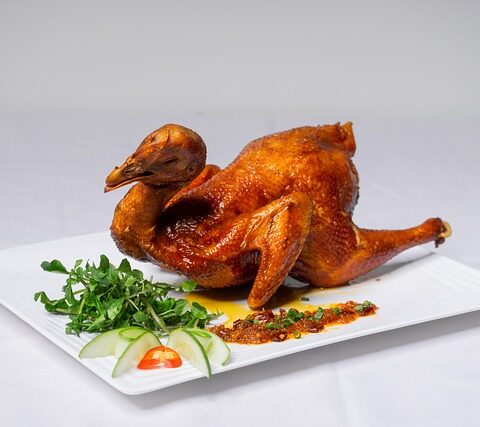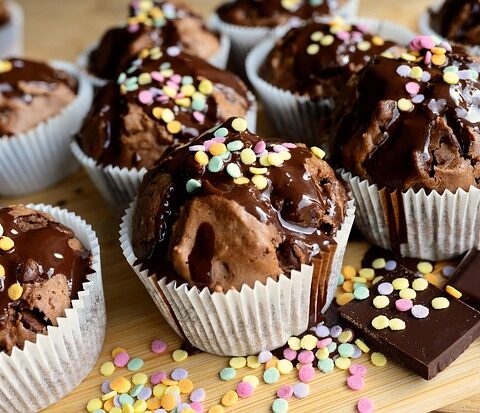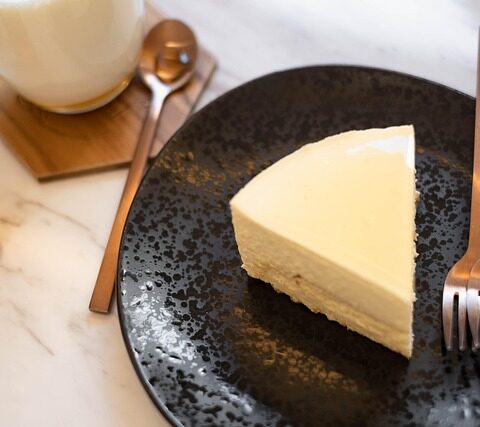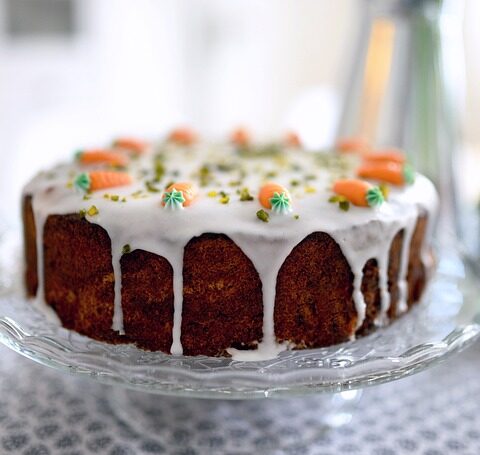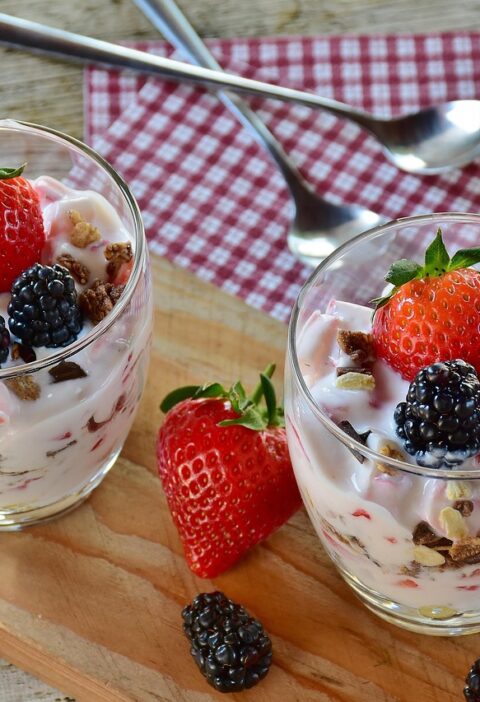The Sweet Spice That Feels Like Home
There is something truly comforting about the smell of cinnamon. The moment that warm, sweet aroma fills the kitchen, it brings a sense of calm, coziness, and nostalgia. Cinnamon is one of those magical ingredients that can transform even the simplest baked goods into something special. Whether it is a batch of gooey cinnamon rolls fresh out of the oven or a tender cinnamon swirl cake, this humble spice has the power to turn ordinary baking into something unforgettable.
Cinnamon is not just another ingredient you sprinkle for flavor. It is history, warmth, and love baked into every bite. It has been used for thousands of years in both sweet and savory dishes, and in baking, it shines brighter than almost any other spice. From cookies and muffins to breads and pies, cinnamon gives that signature golden-brown aroma that makes people stop and say, “What are you baking? It smells amazing!”
In this article, we will explore everything about this wonderful spice, where it comes from, how it works its magic in baking, how to use it properly, and why it pairs so beautifully with other ingredients. And of course, we’ll look at delicious ways to use cinnamon, from soft rolls to rich cakes and more.
So grab a cup of tea or coffee, get cozy, and let’s dive into the warm, fragrant world of cinnamon.
The Story Behind Cinnamon: A Spice with History
Before cinnamon became a kitchen staple, it was once a treasure. Literally. Thousands of years ago, cinnamon was so valuable that it was considered a gift fit for kings and gods. In ancient Egypt, it was used for embalming and perfume. Traders from Arabia brought it to Europe along secret routes, keeping its true origin a mystery for centuries. People believed it grew near paradise or was guarded by mythical creatures.
In truth, cinnamon comes from the bark of trees belonging to the Cinnamomum family. When the bark is peeled and dried, it curls into the familiar brown sticks we know as cinnamon quills. There are two main types:
- Ceylon Cinnamon (True Cinnamon) – Often called “real” cinnamon, this type is lighter in color, softer in texture, and has a delicate, sweet flavor. It’s mostly grown in Sri Lanka.
- Cassia Cinnamon – The type most commonly found in supermarkets. It’s darker, bolder, and has a stronger, more intense flavor.
Both types are delicious, but Ceylon cinnamon is preferred in delicate desserts, while cassia adds a stronger punch that works beautifully in bold recipes like cinnamon rolls or spice cakes.
No matter which kind you use, cinnamon adds warmth, depth, and an irresistible aroma to your baked treats.
The Science of Cinnamon in Baking
Cinnamon does more than make your kitchen smell amazing. It plays an important role in the chemistry of baking.
When you add cinnamon to doughs, batters, or fillings, it infuses the entire dish with a comforting aroma that balances sweetness and richness. The secret lies in its natural oils, especially cinnamaldehyde, which gives it that familiar scent and flavor.
Here’s how cinnamon affects your baking:
- Flavor Balance: Cinnamon adds warmth and complexity, balancing the sweetness in desserts like cakes and cookies.
- Aroma: Even a small pinch can fill your kitchen with a cozy, inviting smell.
- Color: Cinnamon gives baked goods a beautiful golden-brown tone, especially when sprinkled on top before baking.
- Texture: In fillings or toppings (like cinnamon sugar), it can create a slightly caramelized, crisp layer that contrasts perfectly with soft dough or cake crumb.
In other words, cinnamon does not just flavor your desserts; it completes them.
The Comfort of Cinnamon Rolls: Soft, Gooey, and Irresistible
Let’s start with the most iconic cinnamon dessert of all time, the classic cinnamon roll. Few things can beat the joy of pulling apart a soft, warm roll dripping with buttery cinnamon filling and topped with creamy icing.
Cinnamon rolls are a perfect example of how this spice can transform simple ingredients like flour, butter, and sugar into something extraordinary. The secret is in the filling, a mix of cinnamon, brown sugar, and butter spread over soft dough, then rolled up and baked until golden. The heat activates the cinnamon’s oils, filling the air with that unmistakable aroma.
Tips for Perfect Cinnamon Rolls:
- Use soft dough: It should be slightly sticky but easy to handle. This gives you light, fluffy rolls.
- Don’t skimp on cinnamon: The filling is the heart of the roll, so use enough to get that bold flavor.
- Add brown sugar: It melts with the butter and cinnamon, creating a caramel-like center.
- Brush with cream or butter before baking: This helps them bake evenly and stay moist.
- Top while warm: Whether you prefer cream cheese frosting or a simple glaze, spread it while the rolls are slightly warm so it seeps into every swirl.
Cinnamon rolls are more than a treat; they are comfort food in its purest form. Every bite feels like a warm hug.
Cinnamon in Cakes: Sweet, Moist, and Full of Warmth
Cinnamon is a baker’s secret weapon when it comes to cakes. It adds that gentle spice that pairs beautifully with flavors like vanilla, apple, chocolate, and even coffee.
Cinnamon Coffee Cake
Cinnamon coffee cake is one of those desserts that tastes like home. You do not actually need coffee in it, it’s called that because it’s perfect alongside a cup of coffee or tea. The magic lies in the cinnamon sugar swirl that runs through the center and the crumbly streusel topping made from butter, sugar, and more cinnamon.
Every bite is soft, slightly crunchy on top, and loaded with warmth. It is the perfect treat for brunch, breakfast, or a cozy afternoon snack.
Apple Cinnamon Cake
Cinnamon and apple are like best friends in the baking world. When you combine diced apples with a touch of cinnamon in a moist cake batter, something amazing happens: the apples become tender and juicy, while the cinnamon enhances their natural sweetness. The result is a cake that smells like fall and tastes like comfort.
Pro Tip: Use a mix of tart and sweet apples for the best flavor balance.
Cinnamon Chocolate Cake
You might not think cinnamon and chocolate go together, but they’re actually a delicious pair. The warmth of the spice brings out the richness of chocolate, adding depth and complexity. It’s a subtle but memorable twist on a classic dessert.
Cookies, Muffins, and More: Everyday Cinnamon Delights
Not every cinnamon treat has to be fancy. Some of the best cinnamon desserts are the simple ones you can whip up any day of the week.
Cinnamon Sugar Cookies
These cookies are crisp on the edges, soft in the center, and coated with a cinnamon sugar crust that sparkles when baked. They’re perfect for holidays, tea time, or even as a sweet snack after dinner.
Snickerdoodles
Ah, the beloved snickerdoodle, a soft, chewy cookie rolled in cinnamon sugar before baking. The name alone makes people smile. When baked, the sugar melts slightly, forming a thin, crisp shell that contrasts beautifully with the tender center. They are a classic for a reason!
Cinnamon Muffins
Cinnamon adds a warm note to breakfast muffins. Whether it’s banana cinnamon, apple cinnamon, or cinnamon crumb muffins, the spice turns ordinary batters into something cozy and fragrant. A sprinkle of cinnamon sugar on top before baking creates a sweet, crisp crust that’s hard to resist.
Cinnamon Banana Bread
If you love banana bread, try adding cinnamon to the batter. It enhances the banana flavor and gives your loaf that irresistible homemade smell. You can even swirl a cinnamon sugar ribbon through the center for extra goodness.
Cinnamon and Other Spices: A Perfect Match
Cinnamon rarely works alone in baking. It blends beautifully with other spices to create complex and balanced flavors. Here are some of the best partners for cinnamon:
- Nutmeg: Adds a nutty, slightly sweet depth that complements cinnamon in cakes and cookies.
- Ginger: Brings warmth and brightness, perfect for gingerbread or spice cookies.
- Cloves: A strong spice that adds intensity; just a pinch goes a long way.
- Cardamom: Floral and aromatic, it pairs wonderfully with cinnamon in pastries.
- Allspice: Combines the flavors of cinnamon, nutmeg, and clove for a rich finish.
When used together, these spices create layers of flavor that make baked goods taste like they came straight from a bakery.
The Aroma That Feels Like Home
One of the most magical things about cinnamon is its smell. The moment it hits heat, whether in dough, cake batter, or sprinkled over cookies, it releases a fragrance that makes any kitchen feel warm and inviting.
That aroma triggers memories. Maybe it reminds you of your grandmother’s kitchen, Sunday mornings, or festive holidays. Cinnamon is not just a spice; it’s an emotion in edible form. It has a way of bringing people together, whether it’s for breakfast rolls, holiday cookies, or an afternoon cake shared with family.
Health Benefits of Cinnamon (A Sweet Bonus)
While we love cinnamon for its flavor, it also comes with surprising health benefits. In moderation, it can be good for you.
- Rich in antioxidants: Helps protect your body from damage caused by free radicals.
- Anti-inflammatory: May help reduce inflammation in the body.
- Supports blood sugar control: Some studies suggest cinnamon can help balance blood sugar levels.
- Natural sweetener: It can enhance sweetness in foods, allowing you to use less sugar.
Of course, cinnamon should be used in normal culinary amounts, but it’s nice to know your favorite spice adds a little health bonus too.
Tips for Baking with Cinnamon
Here are some helpful tips to get the best out of cinnamon in your baking:
- Use fresh cinnamon: Old cinnamon loses its aroma and flavor. Ground cinnamon usually stays fresh for about six months once opened.
- Toast whole sticks: If using cinnamon sticks, toasting them briefly in a dry pan before grinding enhances their flavor.
- Combine with sugar: Mixing cinnamon with sugar helps distribute its flavor evenly in batters or toppings.
- Don’t overdo it: Cinnamon is strong; too much can overpower a dish. Start small and adjust to taste.
- Store properly: Keep your cinnamon in an airtight jar away from heat and sunlight to preserve its potency.
Cinnamon Around the World: A Universal Spice
Cinnamon is loved across cultures. In every corner of the world, you’ll find people baking with it, each with their unique twist.
- United States: Cinnamon rolls, snickerdoodles, and apple pie.
- Mexico: Churros and hot chocolate with a hint of cinnamon.
- India: Sweet rice puddings and spiced chai.
- Middle East: Baklava and sweet pastries with cinnamon and nuts.
- Europe: Cinnamon buns in Sweden (kanelbullar) and spiced cakes in Germany.
No matter where you go, cinnamon finds its way into people’s favorite desserts. It connects kitchens across the world with one shared ingredient: warmth.
Conclusion
Cinnamon may seem simple, but it holds an undeniable magic that transforms baking. It turns flour, butter, and sugar into comfort, nostalgia, and joy. From the swirl in a cinnamon roll to the dusting on a coffee cake, this spice brings warmth and heart to every dessert.
So the next time you bake, reach for that jar of cinnamon. Whether it’s a drizzle on your latte, a sprinkle over muffins, or a generous swirl in your rolls, remember that a little cinnamon goes a long way in turning ordinary into extraordinary.
Because when it comes to baking, cinnamon is not just an ingredient, it’s a feeling.


